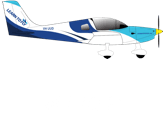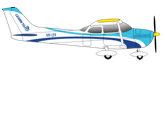
December 24, 2024
Safety and Emergency Procedures in CPL Training
Commercial Pilot License (CPL) training is a critical step in advancing from recreational or private flying to a career as a professional aviator. One of the most crucial aspects of this training involves learning and mastering safety protocols and emergency procedures.
If you’re exploring how to become a commercial pilot or considering enrolling in a pilot training program, understanding the following principles is essential for a successful and safe career.
The Importance of Safety in CPL Training
Safety is a prime aspect of aviation. Commercial pilots are given a great amount of responsibility since the lives of all passengers and crew members are in their hands. That said, the safety-first mentality must be adhered to for each and every flight. CPL training programs put emphasis on risk assessment, standard operating procedures, and communication skills required during critical situations.
Key Aspects of Safety Training:
Standard Operating Procedures
A framework for both routine and non-routine operations to ensure consistency, with as few errors as possible. The pilots learn how to follow a checklist, manage workflow, and maintain situational awareness during each phase of flight.
Human Factors
Understanding human limitations, for example, fatigue stress and decision-making biases is a considerable portion of the CPL training. Crew Resource Management (CRM) courses emphasise matters like teamwork, communication, and error management.
Risk Management
Pilots are trained to identify potential risks, analyse the severity of the risks, and take mitigation actions. This includes pre-flight planning, weather analysis, and in-flight adjustments.
Emergency Procedures in CPL Training
Aviation emergencies are very rare, but preparedness is a big factor in handling them. CPL training ensures that a pilot is not only knowledgeable but also skilled in handling diversified scenarios. Some of the focal points include:
1. Engine Failures
Engine failures are one of the most critical emergencies covered in CPL training. Students learn how to:
- Look for signs of engine trouble, like unusual vibrations or loss of power.
- Follow immediate actions, including maintaining the glide speed, selecting a safe landing site and troubleshooting.
- Make forced landings in open fields, on roads, or other suitable locations while posing the least possible risk to occupants and bystanders.
- Simulated engine failures during training flights prepare students for the high-stakes environment in a controlled setting.
2. Electrical Failures
These electrical failures may also cause the loss of some critical instruments, lighting, and communication equipment. Training points include:
- Identifying electrical failure symptoms, such as circuit breaker trips or dimming displays.
- Backup systems, including handheld radios and battery-operated instruments are used.
- Navigation without electronic aids and safe landing at the closest possible airport.
3. Fire Emergencies
Fires in-flight or during taxi require prompt and decisive action. CPL students practice identifying smoke or other unusual smells indicative of fire, using fire extinguishers effectively, closing systems to isolate and control the source of the fire and carrying out emergency descents and evacuations.
4. Weather-Related Emergencies
Inclement weather can turn into an emergency if not acted upon accordingly. Training includes:
- Identifying hazardous conditions such as turbulence, icing, and thunderstorms.
- Knowing and using weather avoidance techniques.
- Carrying out safe diversions or turnarounds when conditions deteriorate.
- Students are taught to respect weather limitations and prioritise safety over schedule adherence.
5. Loss of Control (LOC-I)
Loss of control in flight is the most common cause of aviation accidents. Training emphasises:
- Recognition and recovery from unusual attitudes or stalls.
- Knowing how improper control inputs can make LOC-I worse.
- Upset recovery manoeuvre training in simulators and training aircraft.
Building a Safety Mindset
A safety-first mindset is a prerequisite for any commercial pilot applicant. This includes knowledge, skills, and attitudes that prioritise safety over convenience or efficiency.
Tips for Developing a Safety Mindset:
- Use checklists religiously: Checklists mean critical steps are never missed, even under stress.
- Stay Informed: Continual learning of new safety protocols, technologies, and case studies helps pilots to be proactive in the identification of risks.
- Situational Awareness: Always be cognisant of the position and speed of your aircraft and its surroundings, anticipating potential hazards.
- Communicate Effectively: Clear and concise communication with the crew, ATC, and passengers can prevent misunderstandings and enhance safety.
Emergency Preparedness for CPL Pilots
Emergency preparedness is more than just knowing procedures; it means keeping calm and being decisive in high-pressure situations. CPL training focuses on equipping a pilot with such skills through:
- Scenario-Based Training: Students encounter various emergency situations during training flights and simulators, learning to apply theoretical knowledge practically.
- Stress Management Techniques: Breathing exercises, visualisations, and CRM principles for staying calm under pressure.
- Post-Emergency Analysis: Instructors debrief after every emergency drill so students are aware of what went well and where improvement is needed.
- Role of Instructors in Safety Training: Instructors play a crucial role in ensuring that students in CPL are properly prepared for emergency procedures. They bring to the classroom real-life experience, guiding students through demanding scenarios while providing a safety net. The relationship between instructor and student builds confidence, so trainees feel supported as they master difficult procedures.
Practical Tips for Prospective Commercial Pilots
For those exploring how to become a commercial pilot, attention to safety and emergency training is not an option.
Here are the practical steps to succeed:
- Choose a Reputable Flight School: Make sure the school has a strong culture of safety and an all-inclusive program for emergency training in its curriculum.
- Commit to Practice: With your instructor, regularly practice emergency procedures in the aircraft and simulator.
- Engage Actively in Debriefings: After every training session, reflect on your performance and ask for constructive feedback.
- Review Accident Case Studies: Real-life incidents provide learning opportunities to understand how to prevent and respond to emergencies.
This is a very basic part of pilot training and an integral part of obtaining a CPL. The skills acquired would empower a pilot to handle unplanned situations with confidence, thus saving lives and safeguarding the integrity of operations. Only with diligent preparation, simulator training, and a proactive safety mindset can aspiring pilots safely succeed in a career as a pilot. Whether you’re starting your journey with a private pilot license or advancing toward your CPL, the principles of safety and emergency preparedness will remain a lifelong priority in aviation.








